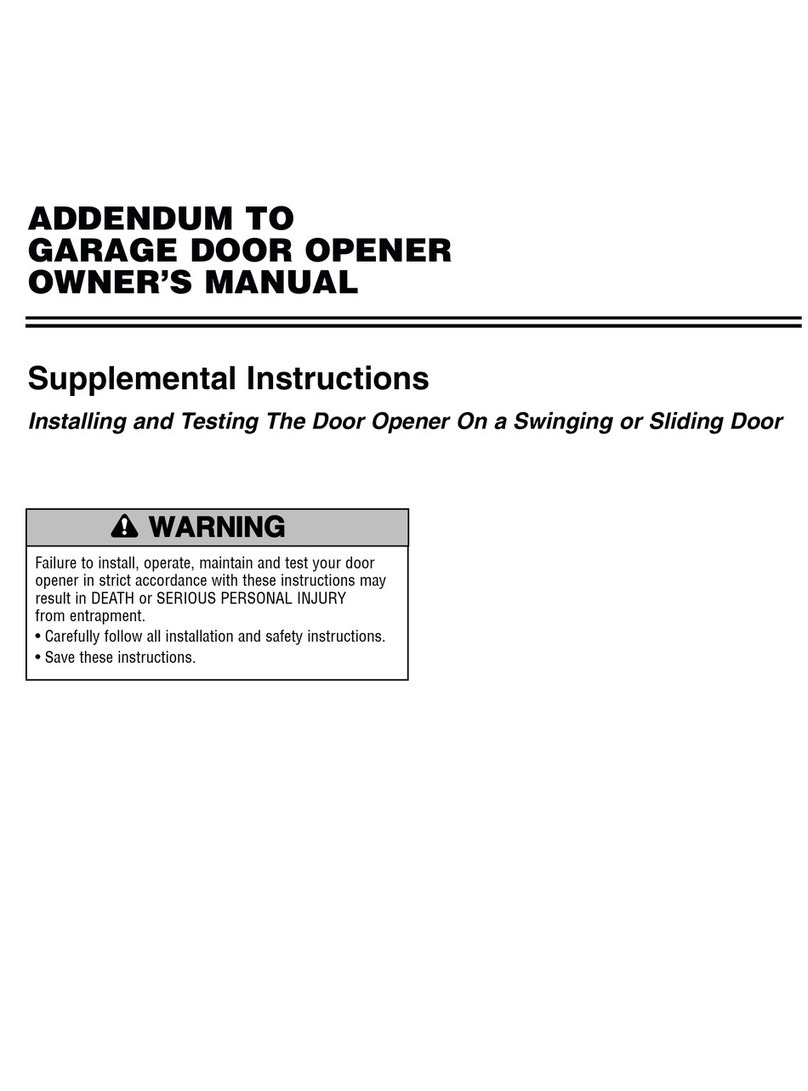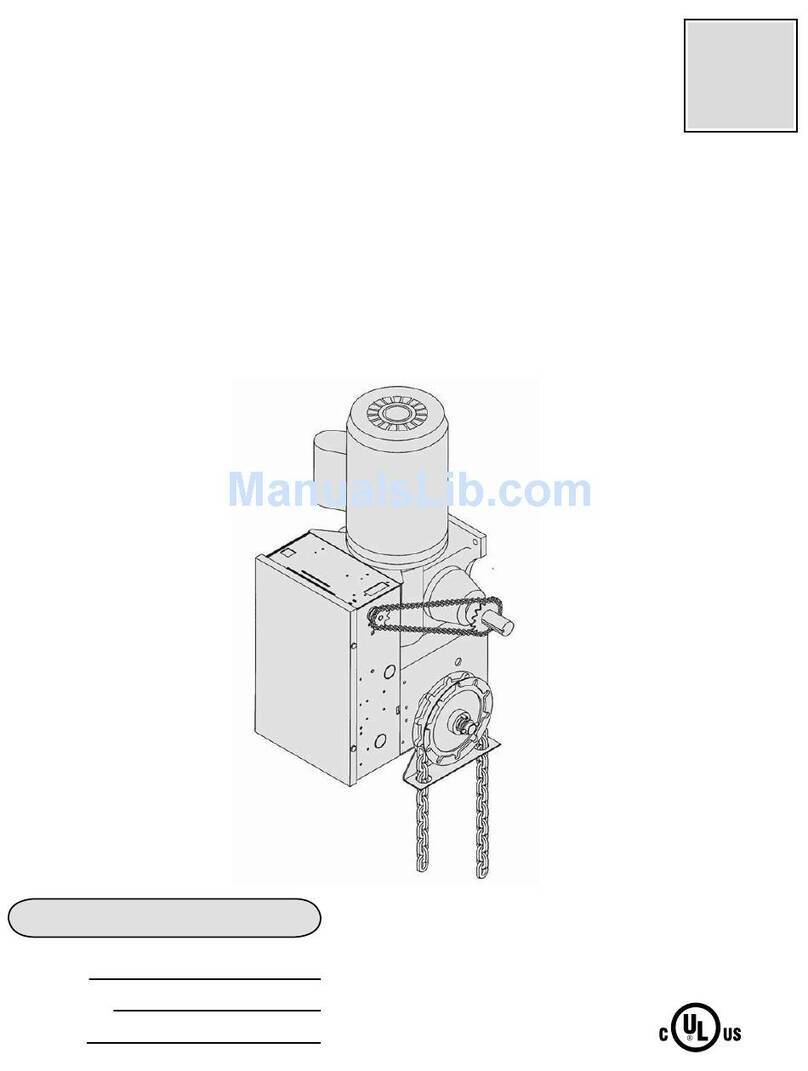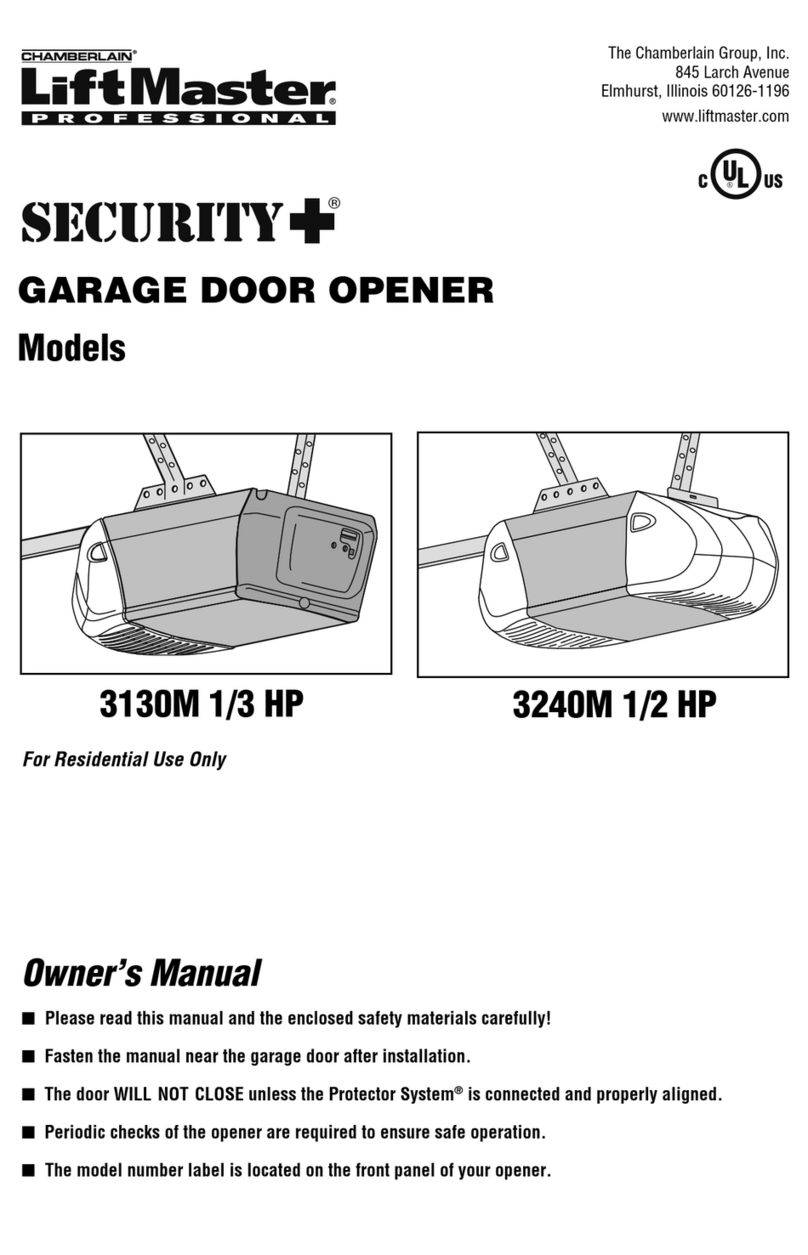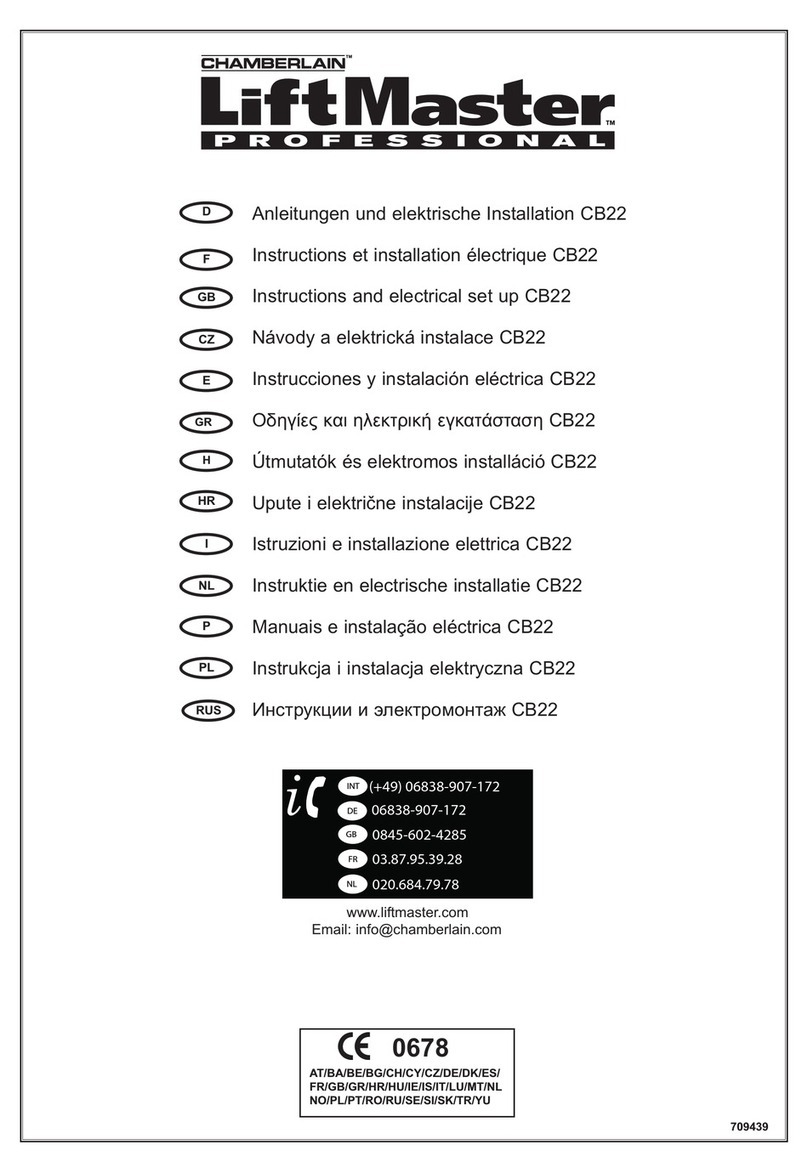Chamberlain D2101 User manual
Other Chamberlain Garage Door Opener manuals
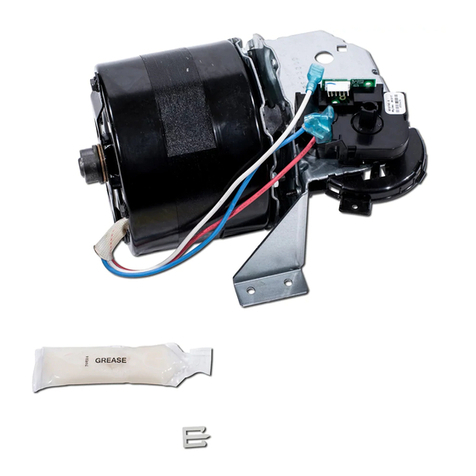
Chamberlain
Chamberlain 041A7767 User manual
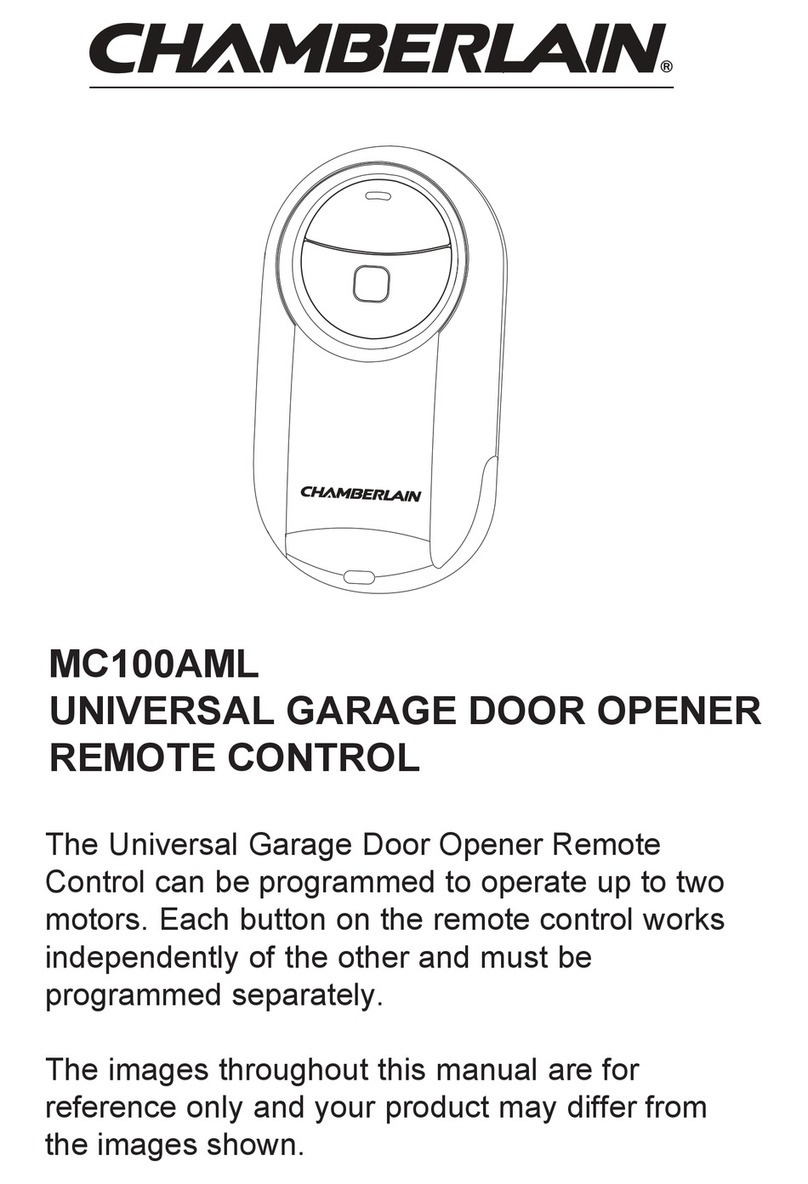
Chamberlain
Chamberlain MC100AML User manual
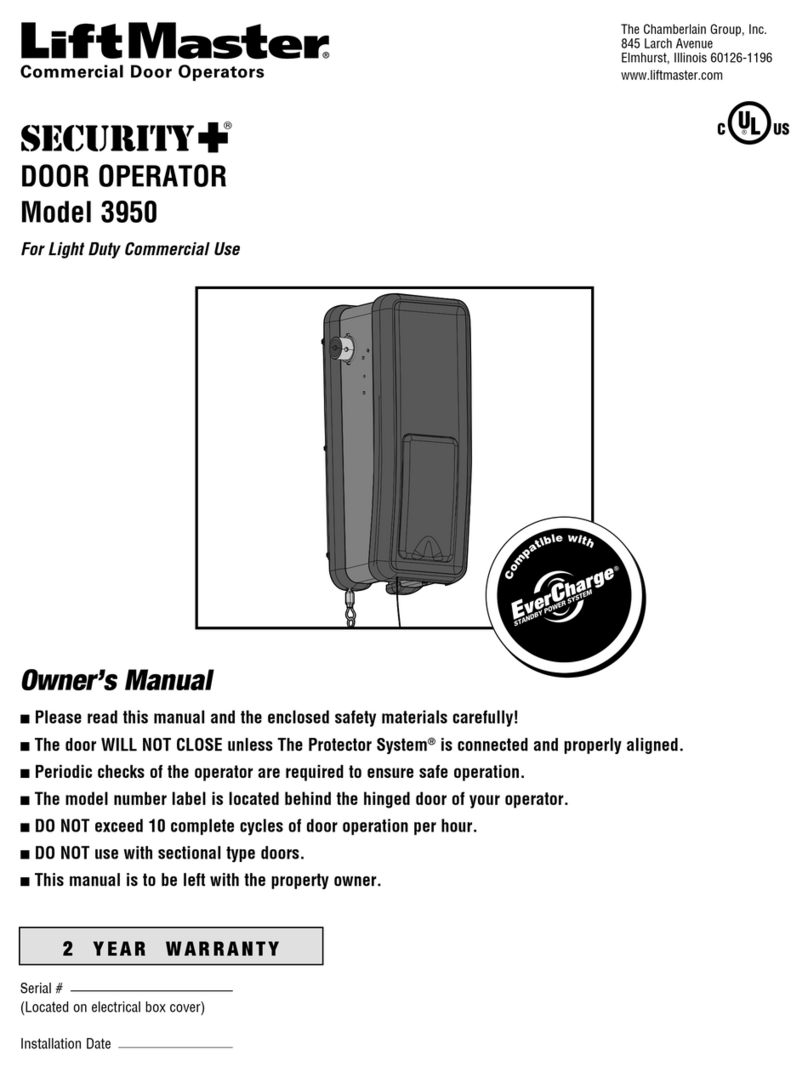
Chamberlain
Chamberlain Security+ 3950 User manual
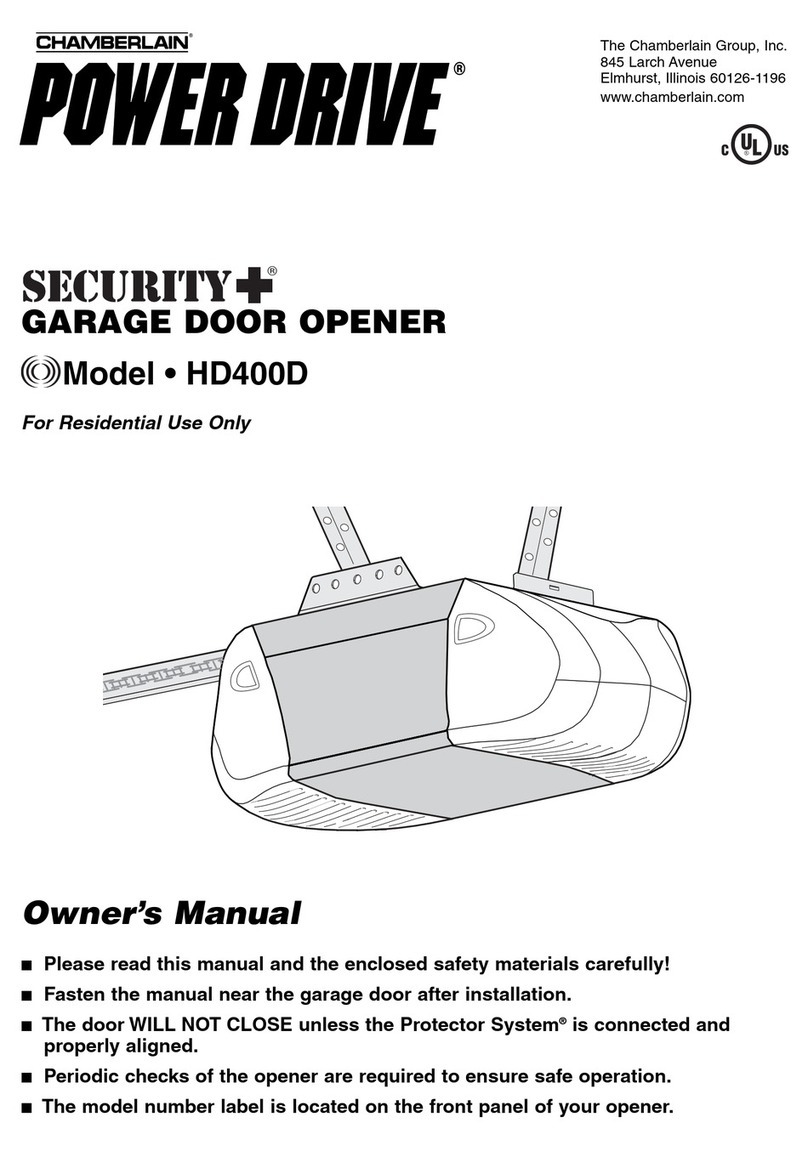
Chamberlain
Chamberlain Power Drive Security+ HD400D User manual
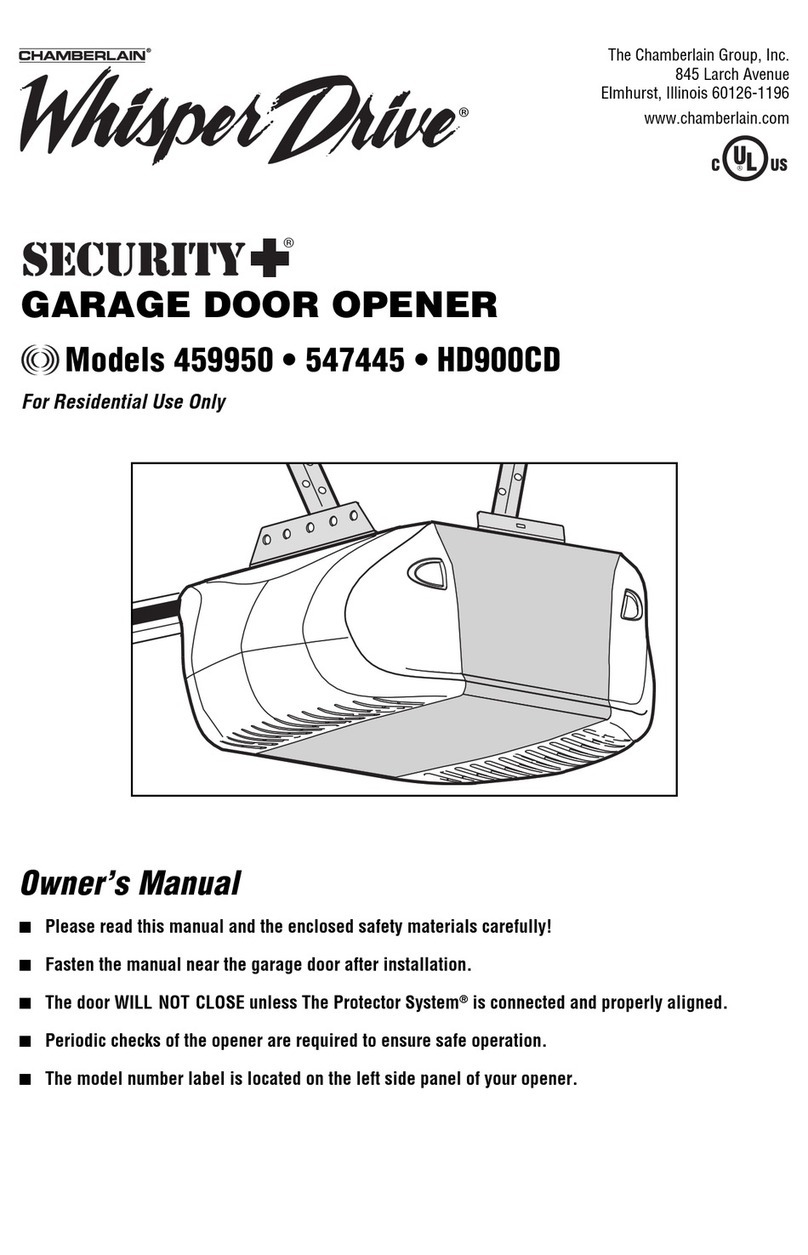
Chamberlain
Chamberlain Whisper Drive Security+ 459950 User manual

Chamberlain
Chamberlain Whisper Drive WD922KC User manual
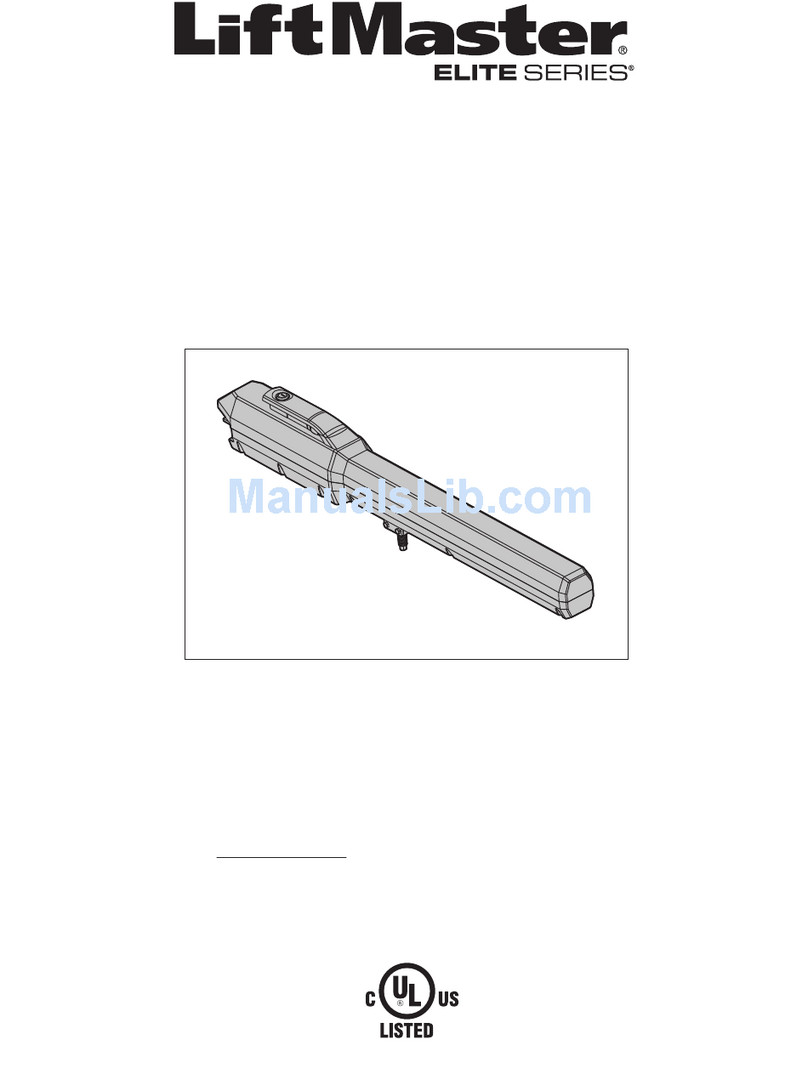
Chamberlain
Chamberlain Liftmaster Elite LA500 User manual
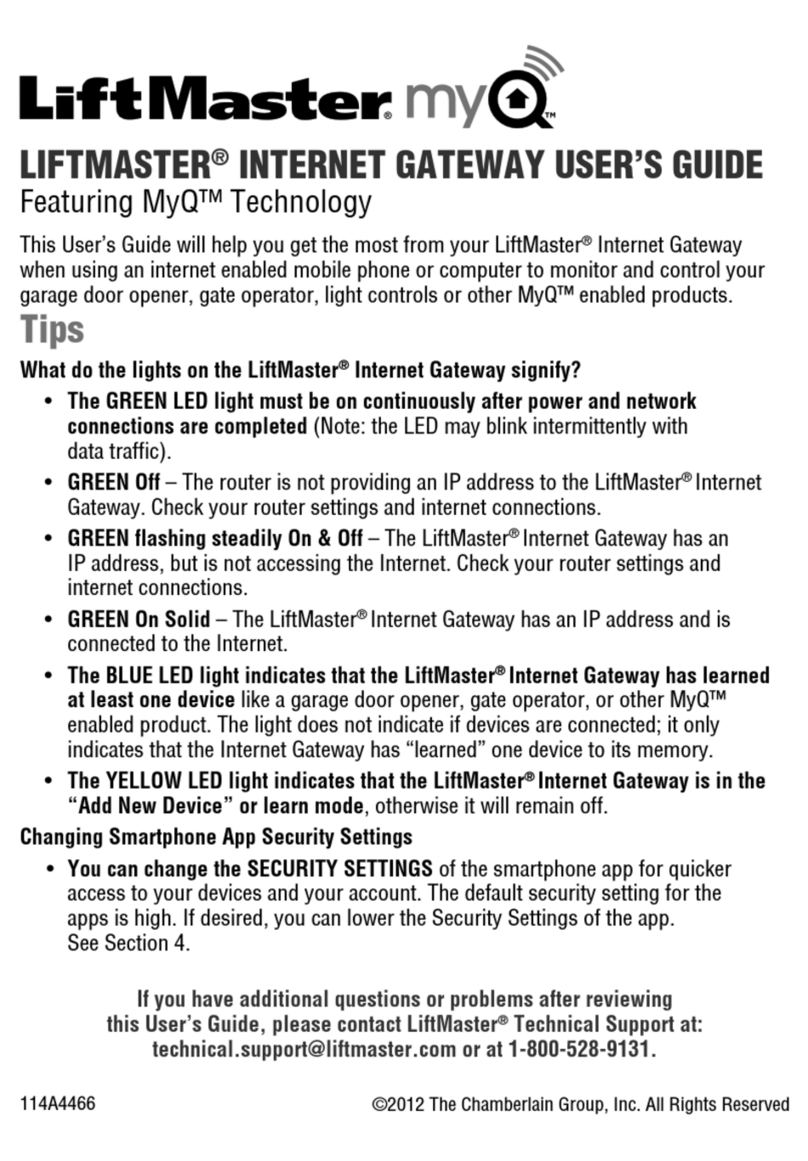
Chamberlain
Chamberlain MyQ User manual
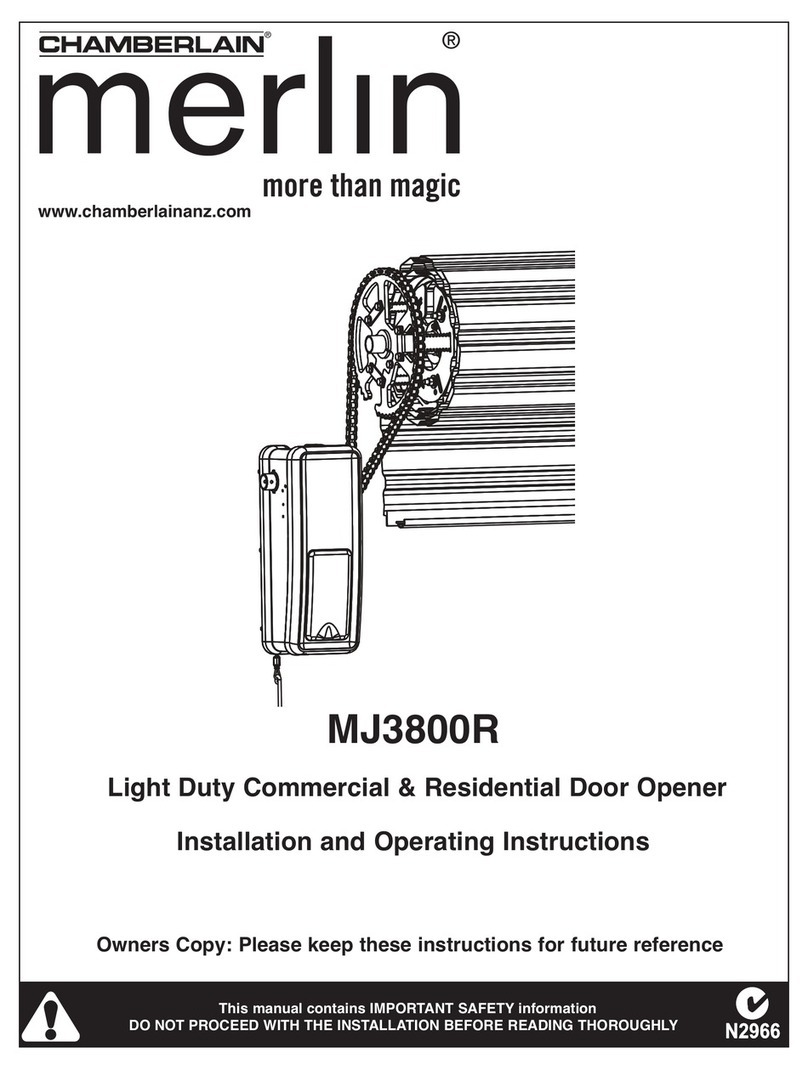
Chamberlain
Chamberlain Merlin MJ3800R User manual
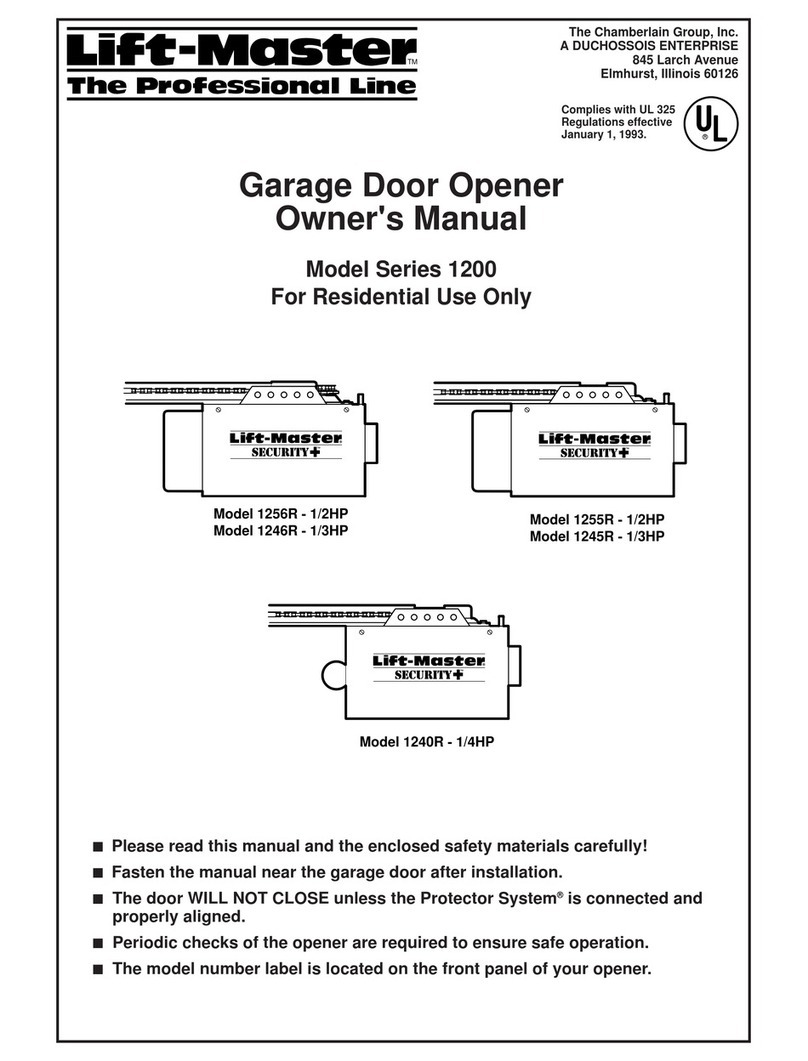
Chamberlain
Chamberlain 1200 User manual

Chamberlain
Chamberlain COMFORT User manual

Chamberlain
Chamberlain Security+ PD300D User manual
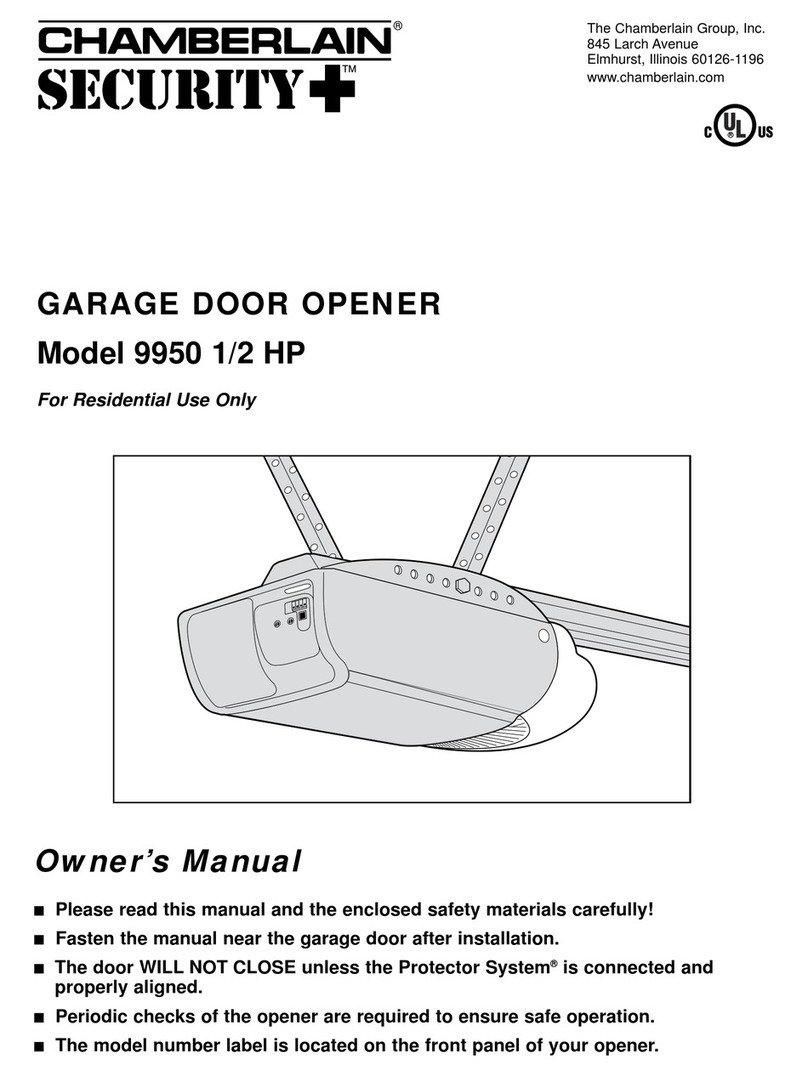
Chamberlain
Chamberlain Security+ 9950 User manual
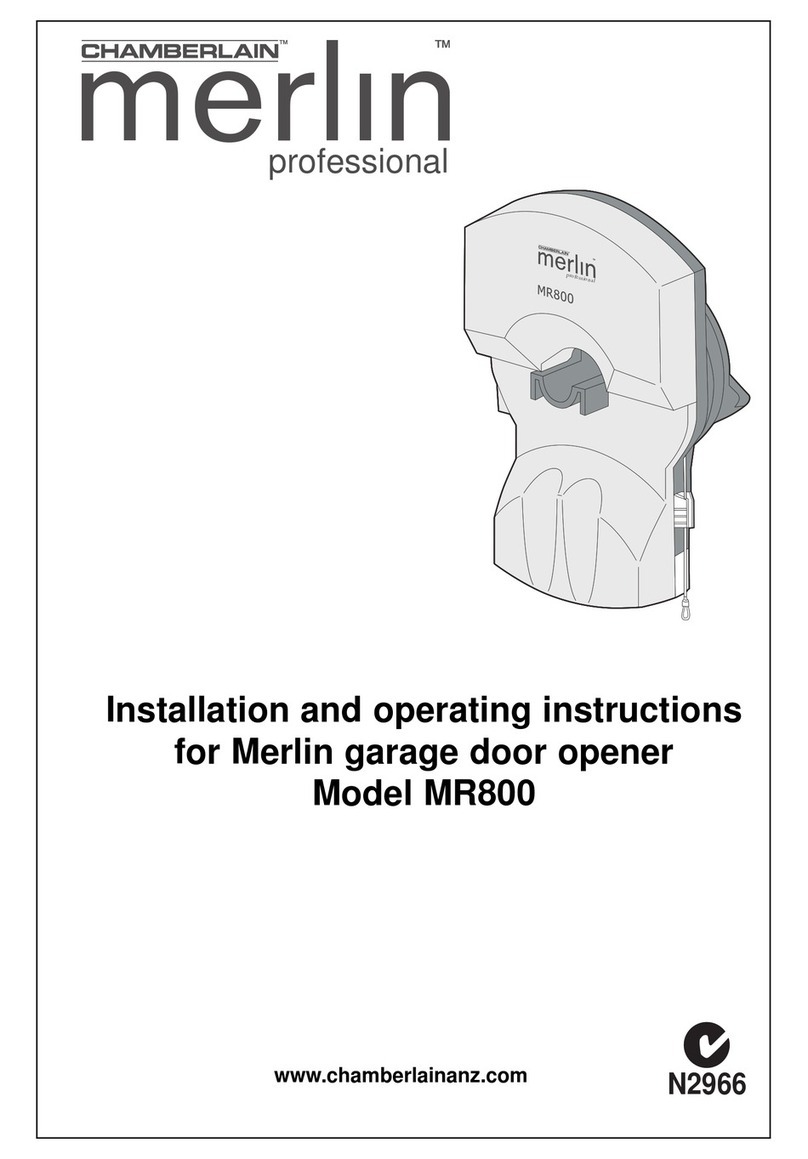
Chamberlain
Chamberlain Merlin Professional MR800 User manual
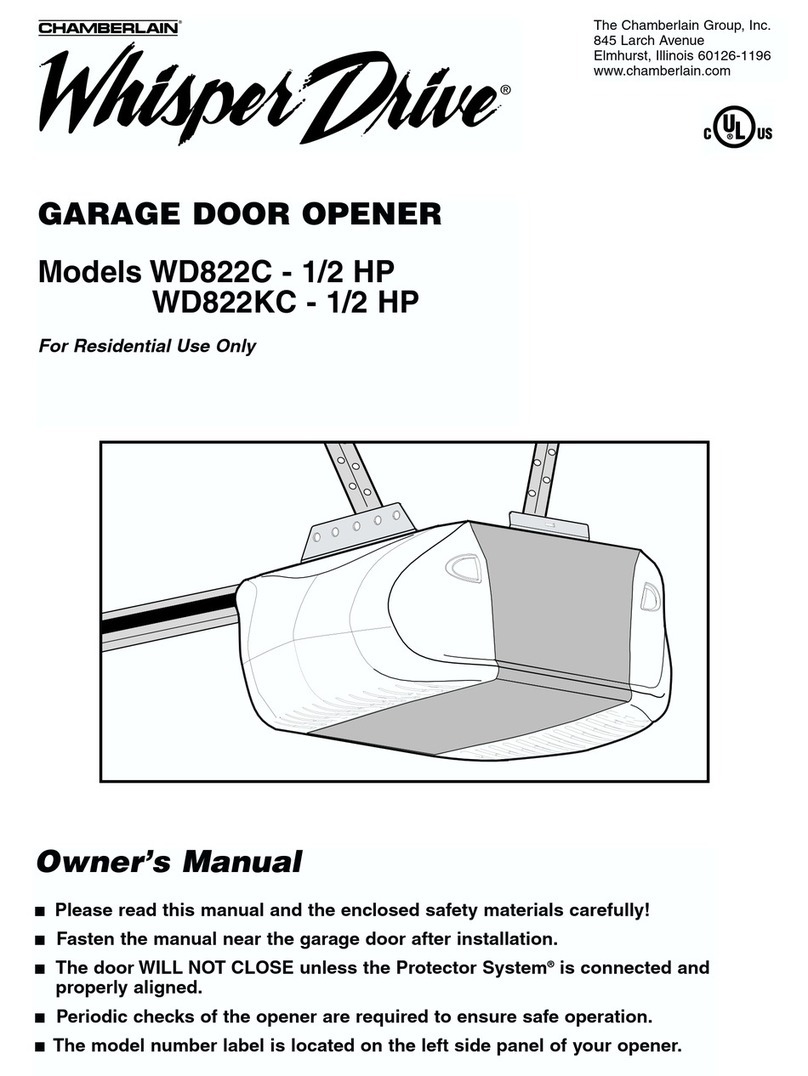
Chamberlain
Chamberlain Whisper Drive WD822C User manual

Chamberlain
Chamberlain LiftMaster LM60 User manual
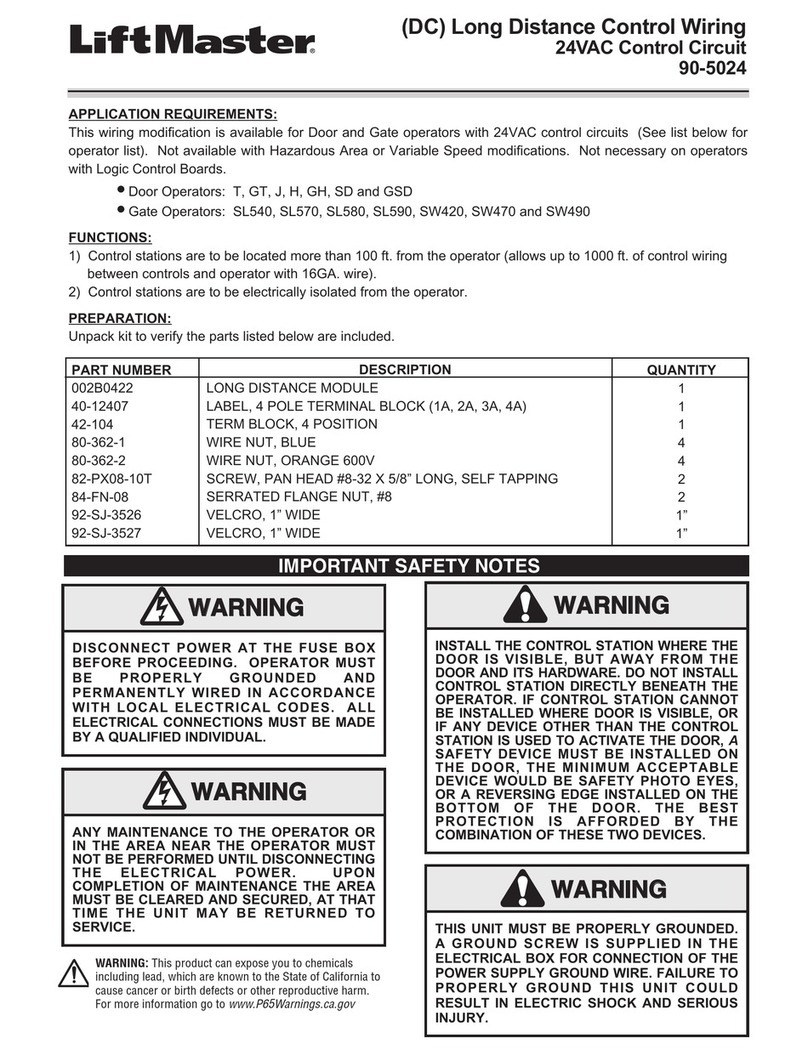
Chamberlain
Chamberlain 90-5024 User manual

Chamberlain
Chamberlain LiftMaster MH5011U User manual
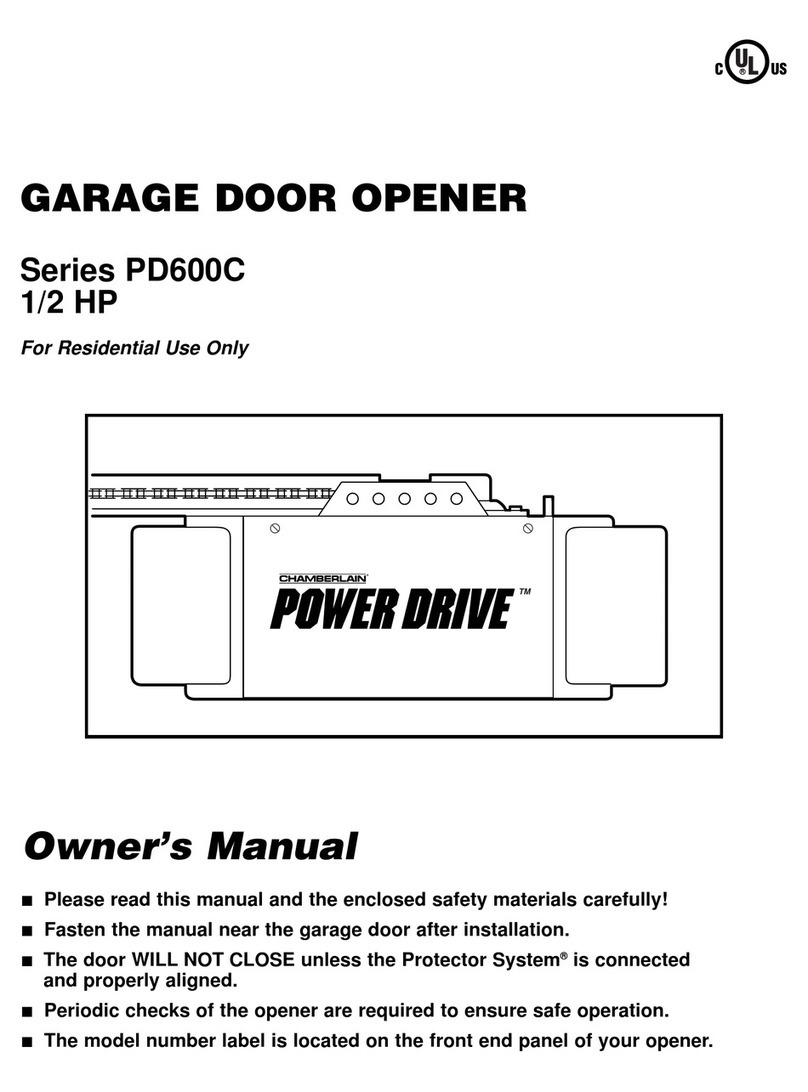
Chamberlain
Chamberlain Power Drive PD600C Series User manual
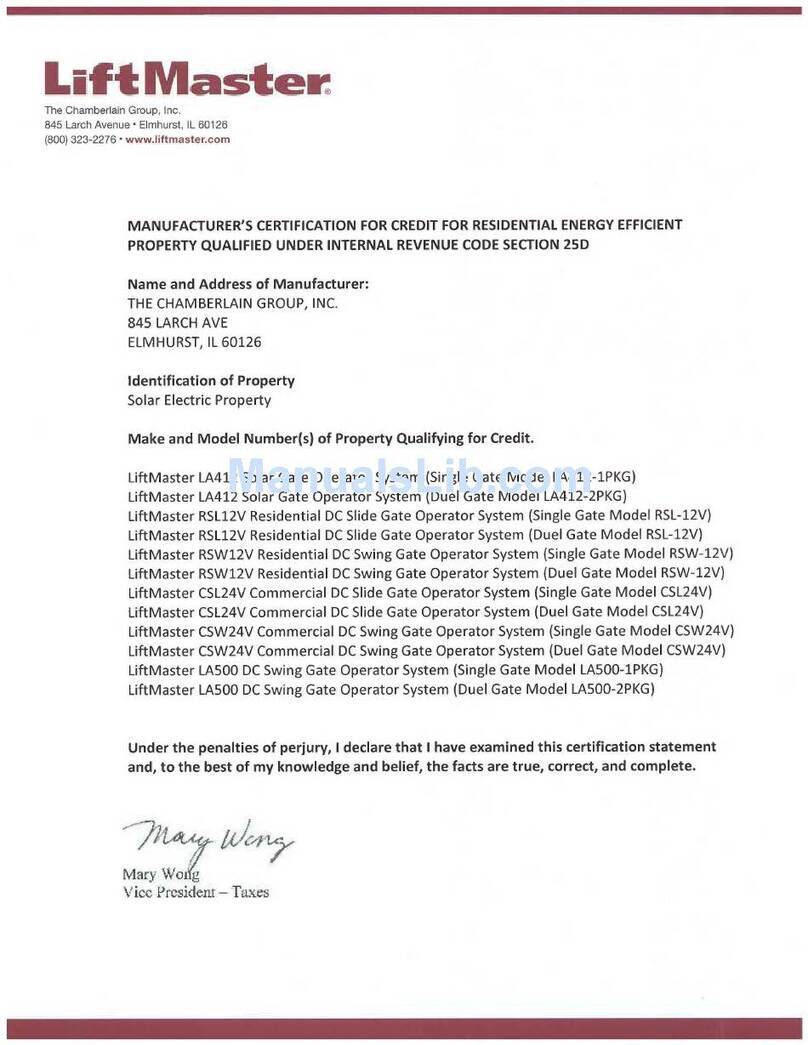
Chamberlain
Chamberlain Liftmaster Elite LA500 User manual
Popular Garage Door Opener manuals by other brands

B&D
B&D Controll-A-Door 5 instruction manual

Automatic Technology
Automatic Technology GDO-9V1 SecuraLift installation instructions

Westfalia
Westfalia 19 36 07 instruction manual

Cardin
Cardin BL Series instruction manual

Bauer
Bauer CROSS18 Application. Installation and Maintenance Manual

Dorma
Dorma ES 90 manual

Wayne-Dalton
Wayne-Dalton 8124 Installation instructions and owner's manual
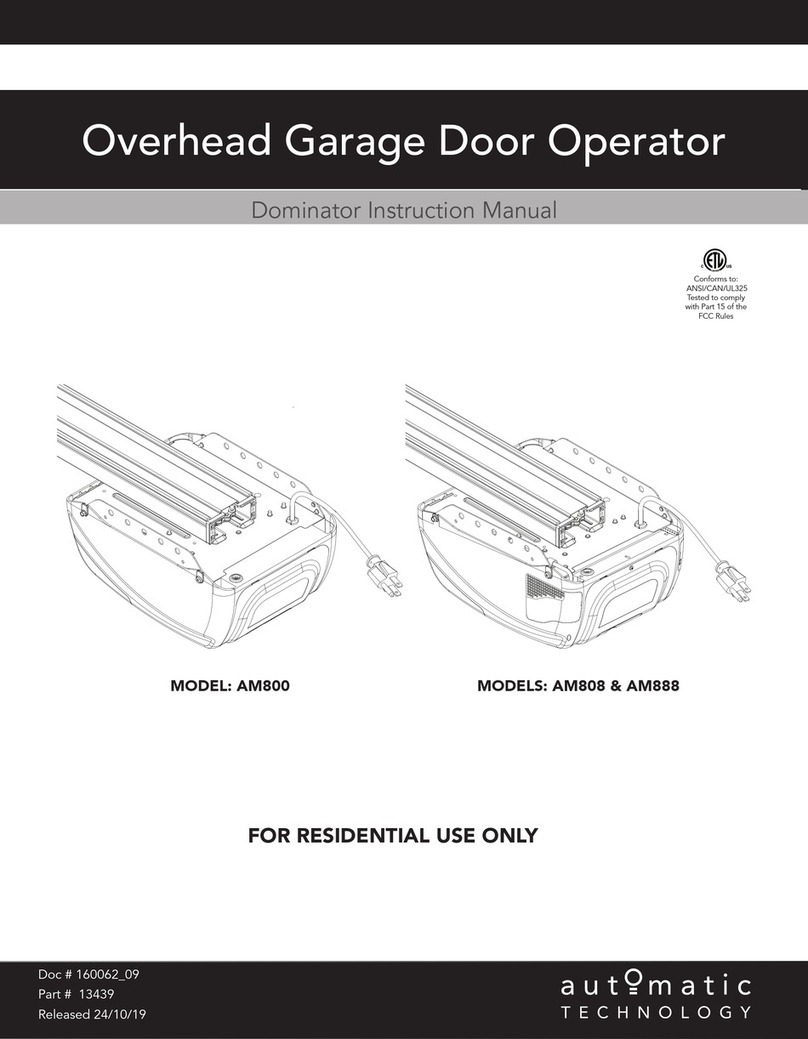
Automatic Technology
Automatic Technology Dominator AM800 instruction manual
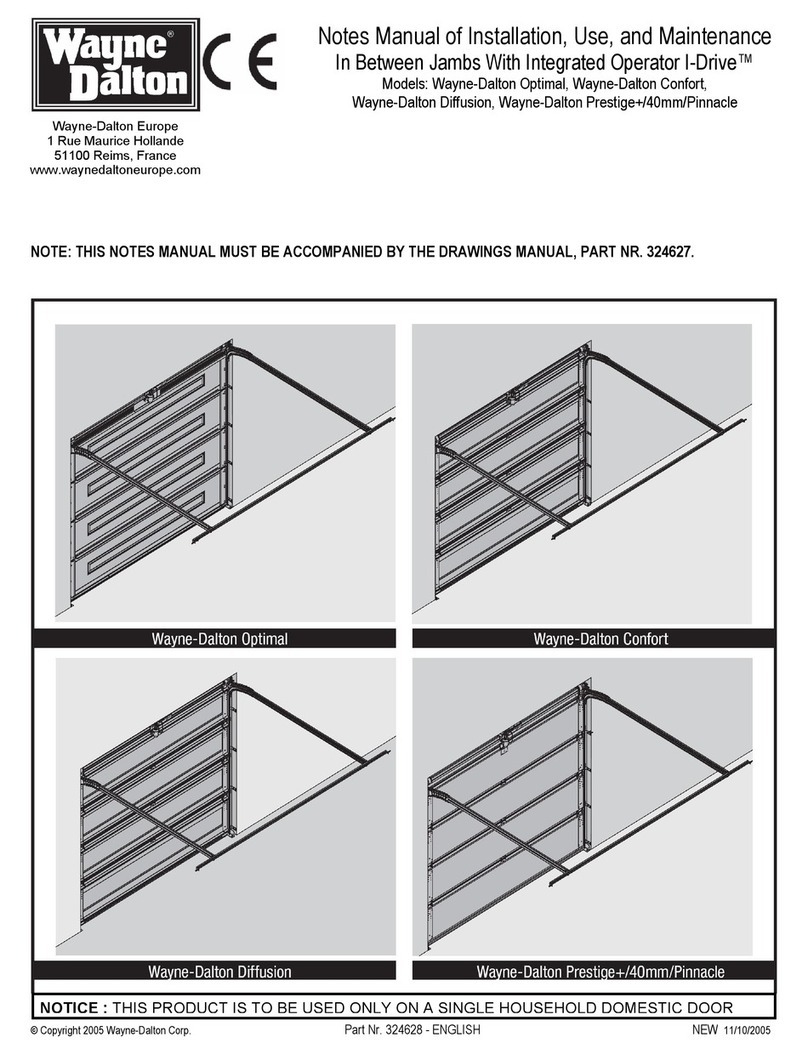
Wayne-Dalton
Wayne-Dalton Optimal Installation, user operation & maintenance manual
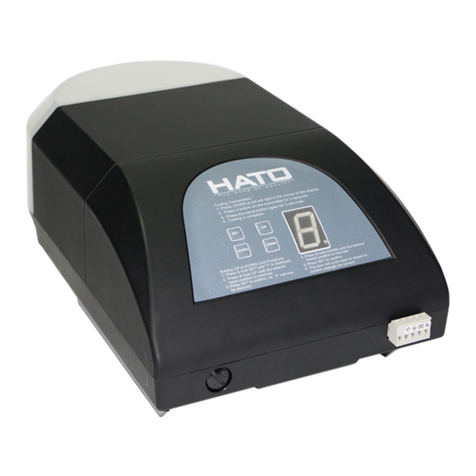
HATO
HATO 120 Automation manual
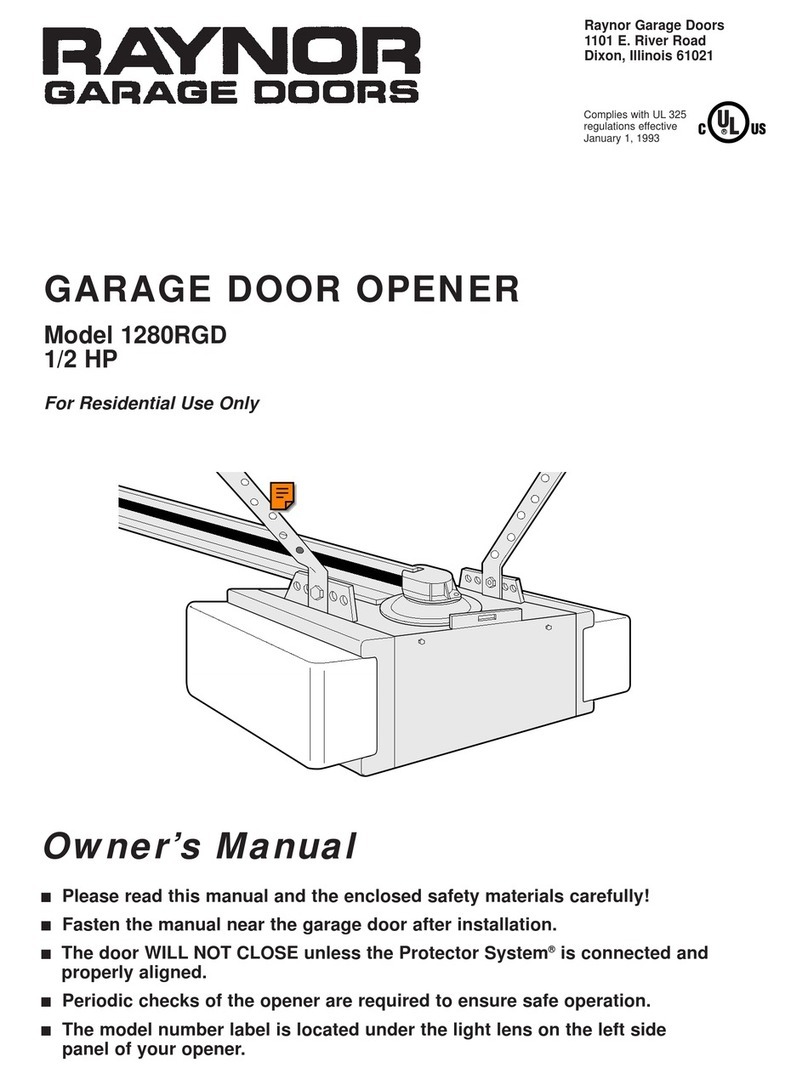
Raynor
Raynor 1280RGD owner's manual
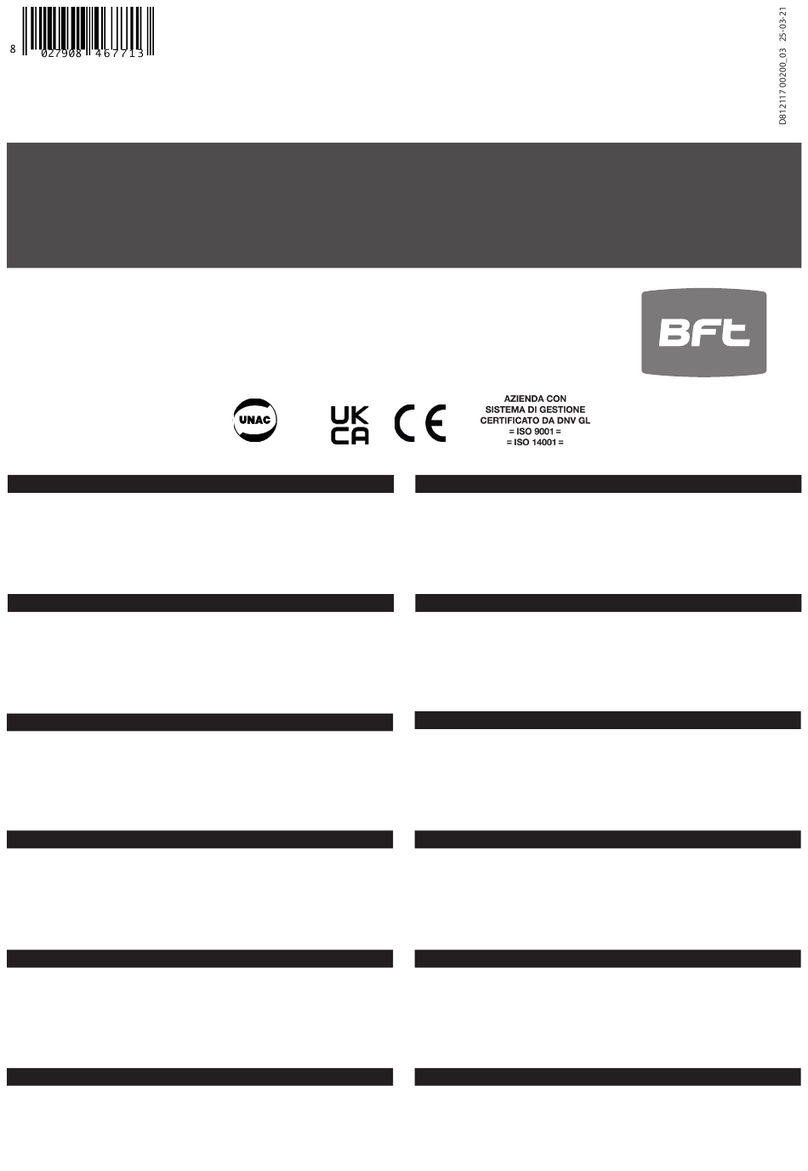
BFT
BFT PRV AA SL Installation and user manual
